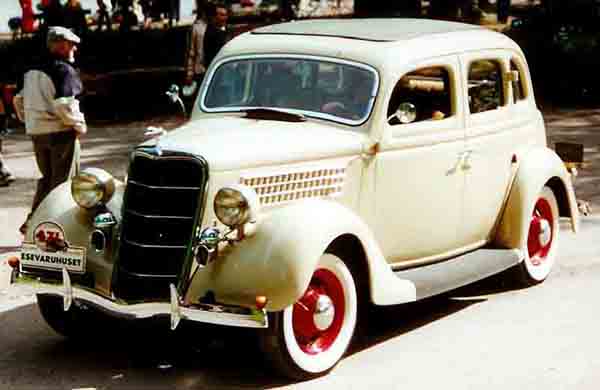
(Editor’s note: This is the first in a series of architectural commentaries and critiques that will run in San Diego Uptown News every other issue. The opinions are those of the author.)
By Eric Domeier
Architecture can be an expression of a community’s priorities. Whether pragmatic or poetic, property owners who have the freedom to express themselves, contribute to a local cultural identity. Unfortunately, the reality of this cultural evolution is hampered by a clinging need to preserve historical structures. While preservation has an important, albeit minor, role in our community, a greater need is for vibrancy, renewal and an embrace of the future.

The Craftsman is dead
Here in San Diego, we worship our Craftsman homes in an almost cult-like fashion. But if we look a little more deeply, it is clear that these century-old structures are not suitable to modern living.
The Craftsman was born out of the Arts and Crafts Movement, which was born out of resentment for the Industrial Revolution. Its fundamental premise is a rejection of modernity. Culturally speaking, the transition from an agrarian society to one of mechanized industry was shocking. And the Craftsman was an expression of our newly industrialized culture’s discomfort with rapid change.
By the early 1900s, a strong cultural sentiment existed for a romanticized pre-industrial lifestyle. While reaping the benefits from an industrial nation, a middle-class family could adopt the warm aesthetic that the Craftsman style offered. These urban families could retreat to an almost real illusion of pastoral ideals. In that era, individuals, designers and developers had the freedom to respond to cultural trends and express themselves through architecture. The cultural trend in 1920 was one of reflection on a past forever gone while hopeful about a bright future.
The Craftsman home as it survives today is spatially and structurally unsound. The typical 1900s-built Craftsman is not insulated. The structural systems are inadequate to protect the inhabitants from a severe earthquake. The original materials used in these homes include asbestos and lead paint, posing an inexcusable threat to the occupants. The first room one walks into off the street is usually one of the most private rooms in the house, creating an alienating juxtaposition between public and private spaces. The interiors are of a size and configuration that make modern living awkward at best.
The Craftsman home was designed and sold to a community that did not have television, computers, blenders or microwaves. The first radio broadcast in San Diego was in 1922. If the family had a car, it was probably steam driven. In 1930, the population of San Diego was 147,000. Today it is 1.38 million. Most historians consider the Craftsman style as having run its course by 1930.
We’ve moved on
Since the decline of the Craftsman, we have undergone at least five cultural revolutions. World War II brought the U.S. into the global field of play as a dominant power, post-war prosperity introduced new levels of domestic and civil comfort, the ’60s tore down the gilded cage of domesticity in search of something more important and the ’80s brought back an era of selfishness. The new millennium introduced computers, the Internet and the world in our pocket. Each of these first four eras were represented in music, arts, clothing and architecture. The fifth revolution continues to unfold and find its expression.
Architecture that expresses cultural shifts typically occurs in new communities as each generation flees an existing urban grid to find their own piece of ground.
But this is the fundamental difference between now and then. Environmental common sense and California regulation is putting the brakes on development in undeveloped areas. The state has mandated that land be preserved and that communities be recycled. Therefore, technological and cultural advancement must occur at the expense of our already-built community. We must tear things down to make way for the future.
Stuck in the mud
If culture is like the ever-changing course of a riverbed, the dogmatic impulse to preserve old buildings has been the Hoover Dam to a natural cultural evolution. Driving through North Park, one might think that we are all historians with a penchant for moldering crawl spaces. And these old Craftsman homes, symbols of a rejection of modernity, are 100 percent contrary to our current priorities.
Practically speaking, a citizen cannot modify a structure they own if that structure is a Craftsman or other historically “relevant” artifact. The city makes even the smallest modification, daresay the demolition, of a Craftsman home exceedingly painful. The process is time intensive and expensive. If one even wanted to replace the old single pane windows with an advanced, insulated product it would require studies, reports, submissions and possibly even hearings.
The dogmatic preservation of our historical buildings is contrary to common sense. It has frozen cultural evolution in the built environment, rejects the state’s mandate for more sustainable homes and deters SANDAG from reaching their housing goals. It would be worth the effort to identify and hear from the elected official or officials who have empowered the preservationists to this extent. Do they understand that this group has taken our community hostage? Do they comprehend the implications of limiting an individual’s rights to have control over their own property? Have they considered the significant economic gains that will result from a mid-town construction boom? I encourage the elected official or officials to step out and speak to these ends.
Here and now
So what is our cultural priority today? It is hard to discern in this city around us. But if I look through my mobile device and into the world, it would seem that environmental conservation is important to a lot of people, as is physical security in a less secure world. Privacy and emotional shelter from a busy and sometimes overwhelming life are also important to our personal well-being. And urban, middle-class housing is at an all-time shortage.
As citizens and designers, we must restore our right to express our individuality in our built world. We must regain our membership status in our own culture. We will create homes and communities that are in the image of the here and now. The new homes will be smarter, sustainably built with less dependence on the utility grid. They will provide an emotional refuge with properly designed buffer zones between street and home. They will be larger structures on smaller lots so that affordability is a reality. And they will represent the occupant’s priorities and in whole, restore the culture of urban design.
—Eric Domeier lives in North Park and practices architecture from his Grim Avenue office. Visit his website at dome-arch.com or call him at 619-531-0010.












Discussion about this post